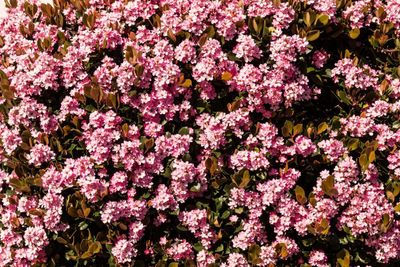Transplanting Indian Hawthorn
If you want a low-maintenance evergreen shrub to form graceful mounds in your garden, consider Indian hawthorns (Rhaphiolepis species and hybrids). Their attractive, dense foliage and neat, mounded growth habit appeal to many gardeners. And they are ideal low-maintenance plants that don’t demand much to keep looking nice. In spring, Indian hawthorn shrubs offer fragrant pink or white flowers to ornament the garden. These are followed by dark purple berries eaten by wild birds. Moving Indian hawthorn successfully is possible but, like all transplants, should be undertaken with care. Be sure to follow these tips on when and how to transplant an Indian hawthorn.
When to Transplant Indian Hawthorn Shrubs
If you are thinking of an Indian hawthorn transplant, you should act in winter or early spring. Although some say it is possible to transplant these bushes in summer, it isn’t usually recommended. If you are moving Indian hawthorn from one garden location to another, you’ll want to be sure to get as much of the root ball of the shrub as possible. With a mature plant, consider root pruning six months before the Indian hawthorn transplant. Root pruning involves digging a narrow trench around the plant’s root ball. You slice off roots that are on the outside of the trench. This encourages new roots to grow closer to the root ball. These travel with the shrub to the new location.
How to Transplant an Indian Hawthorn
The first step is to prepare the new planting location. Select a site in sun or partial sun that has well-draining soil. Remove all grass and weeds as you work the soil, then dig the transplant hole on top. It must be about as deep as the current root ball. The next step in moving Indian hawthorn is to water the shrub well in its current location. The entire ground around it should be saturated one day before the move. Dig out the trench around the hawthorn. Continue digging down until you can slip a shovel under the root ball and lift it out. Transport it by tarp or wheelbarrow to the new planting site. Settle it in at the same soil level that it had been established. To finish your Indian hawthorn transplant, fill in soil around the root ball, then irrigate well. It is useful to build an earth basin around the hawthorn as a way to get water to the roots. Irrigate frequently during the first few growing seasons.
